Much of the eastern and southern United States is dealing with frigid temperatures and bracing for a “bomb cyclone,” creating miserable conditions for people.
It can be equally miserable for some wildlife species.
Many animals, of course, are well adapted to thrive in even the coldest of temperatures. Creatures like Arctic foxes, with frostbite-proof feet, are exquisitely adapted for Arctic environments.
Other wild animals have evolved ingenious ways of conserving energy, including hibernation, torpor and other physiological changes. Some simply migrate to warmer climes. Others have thick layers of fat or lush fur that helps them stay warm and dry.
Birds will seek out a variety of unconventional shelters – both natural and human-made – to stay warm on bitterly cold nights. Naturalist Bernd Heinrich reports flying squirrels cramming into small tree holes, huddling together in a tight mass for warmth. (Heinrich’s book Winter World is a treasure trove of stories of how animals survive the cold).
There are species, though, that have recently expanded their range due to climate change or other factors. When a cold snap occurs, they’re ill prepared for it.
While it’s difficult to know how this latest bout of frigid weather will impact wildlife in parts of the United States, here are some species that may not fare well.
-
Carolina Wren
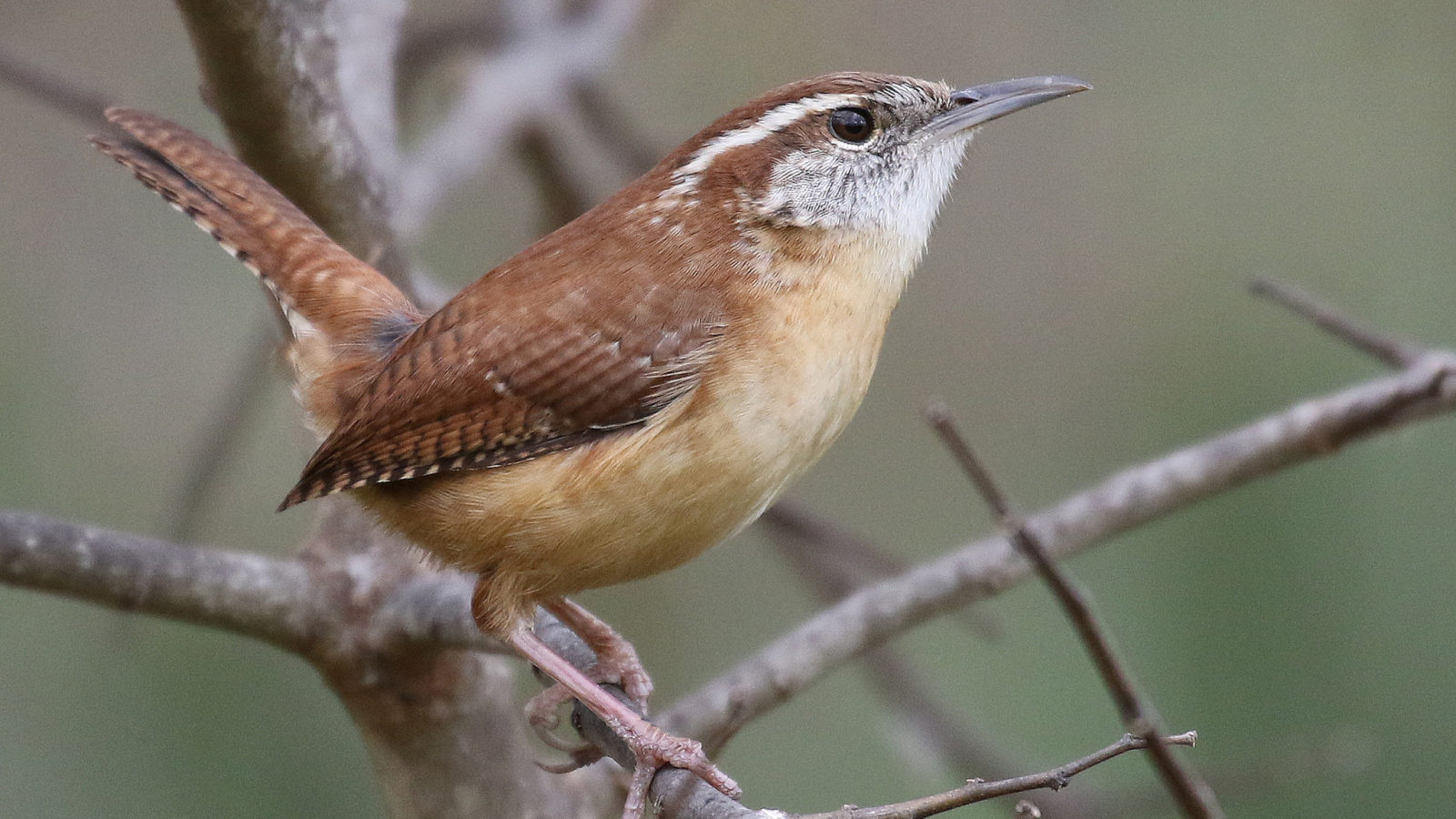
Carolina wrens expand their range northwards until cold weather causes die-offs. Photo © Isaac Sanchez / Flickr through a CC BY 2.0 license While visiting my parents and brother in central Pennsylvania over the holidays, I enjoyed watching the antics of the Carolina wrens visiting their bird feeders. They’re fun birds to observe, always active and vocal.
They’re also somewhat unfamiliar to me: growing up, we’d never see them around the yard. Indeed, Carolina wrens have been expanding their range north over the past decades. They are not migrants: they live in a locale year round.
However, these birds don’t fare well during periods of very cold weather. Since they don’t migrate, they often perish.
This pattern has been recorded by the Great Backyard Bird Count, a citizen science initiative held each February where participants keep track of birds seen in backyards or nearby parks. In years with very cold weather, Carolina wren sightings diminish greatly — the birds have died off, and their range contracts.
The Carolina wren population eventually expands northwards again. It takes time. According to Great Backyard Bird Count reports, it can be ten years or more until Carolina wrens return to northern states in numbers following a cold weather die-off.
My parents tell me they have not seen the Carolina wrens this week, not a promising sign. The polar vortex will likely wipe out many of these birds in the East and Midwest. They’ll be back, but not immediately.
-
Virginia Opossum
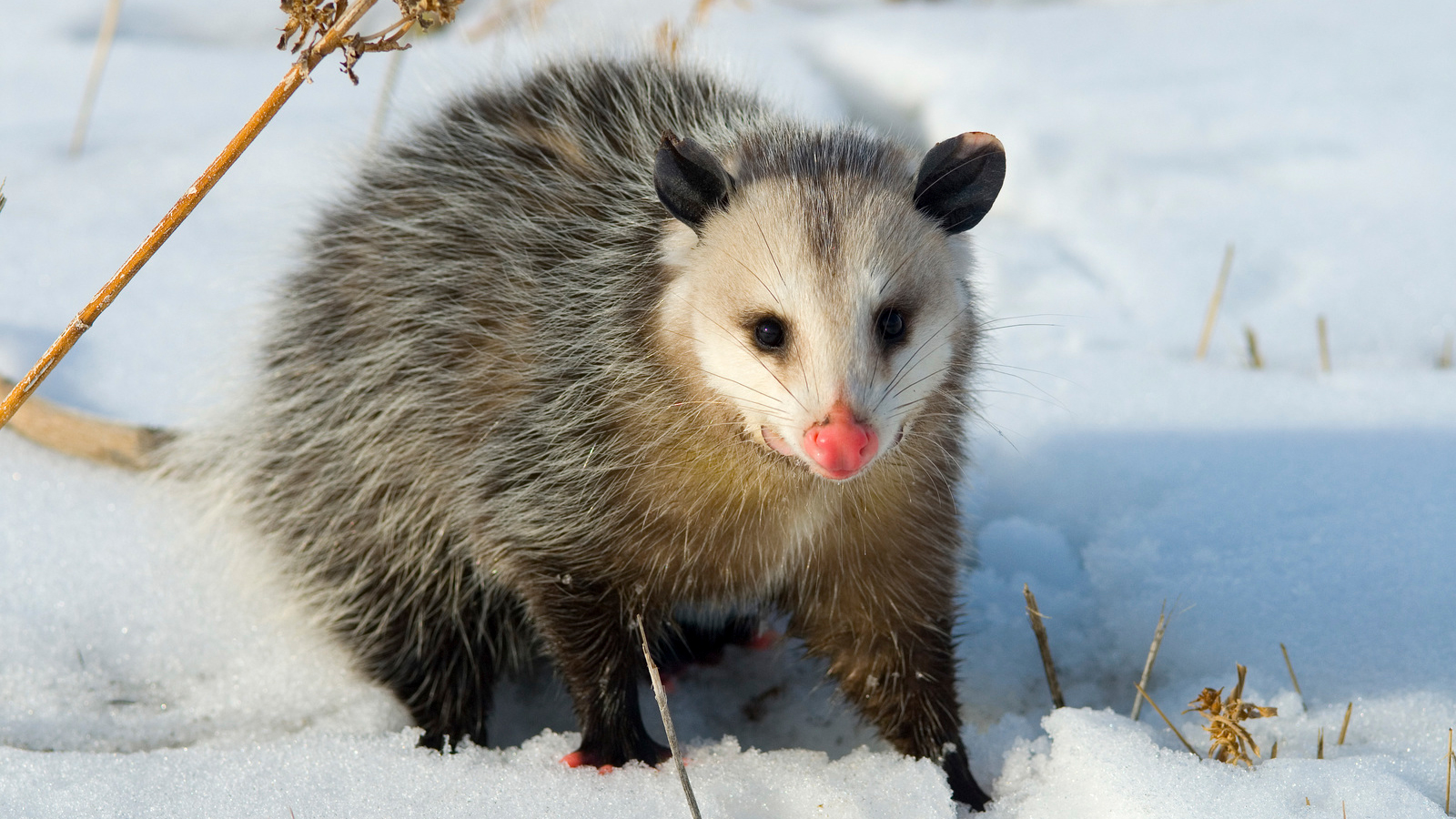
Opossums are prone to frostbite on their hairless tails. Photo: Chris Helzer/The Nature Conservancy The opossum has been expanding its range north for decades. It’s particularly well adapted to humanity, able to survive amidst farms, city parks and suburbs.
It’s much less well adapted to winter weather.
Unlike some other mid-sized mammals that thrive in the presence of humans – think raccoons, red foxes, coyotes – opossums don’t have furry, protective tails. In fact, their tails (and ears) are hairless, making them particularly susceptible to frostbite and even hypothermia.
Many opossums bear physical evidence of surviving harsh winters – damaged ears and tails. Their tails often appear stumpy or as if something had bitten them off, but these are signs that their tails suffered frostbite.
Opossums will den for a few days to escape the cold, but they don’t hibernate. They have to feed periodically. Sometimes they’ll change their nocturnal habits and feed in daylight hours during the winter, to take advantage of warmer temperatures.
That doesn’t make much difference, though, when it’s -20 degrees Fahrenheit (as it was in parts of their range this week).
Expect to see a lot of tail-challenged opossums this spring.
-
Bobwhite Quail
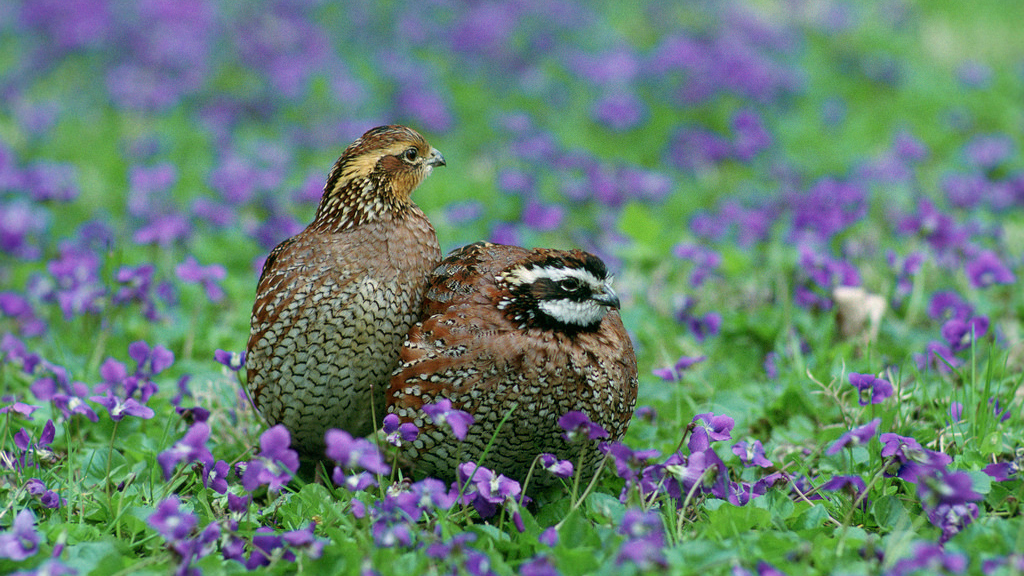
Northern Bobwhite quail Photo © Steve Maslowski/USFWS on Flickr through a CC BY 2.0 license The northern bobwhite can survive harsh winters quite well – provided it has ample habitat.
This quail species was once a common farmland and grassland bird, and a celebrated game species over much of its range. Since 1966, its populations have declined by 85 percent. While the reasons for this decline remain contested, nearly all biologists agree that habitat loss plays a major factor.
Thick cover along fields provides many benefits for quail, among them protection from inclement weather. Bobwhites, like many species, need to burn more energy to stay warm in winter. Even a few degrees temperature can have a tremendous impact on survival. The conservation group Quail Forever has found that “the temperature inside a high-quality shelterbelt – ideal cover from the cold – can be 5°F warmer.”
Those 5 degrees can be the difference between life and death. Recent research found that a severe winter weather event can have long-lasting impacts on northern bobwhite populations. A healthy quail population could bounce back from this decline, but a population in peril – with inadequate habitat – may take years to recover, if it ever does.
-
Manatee
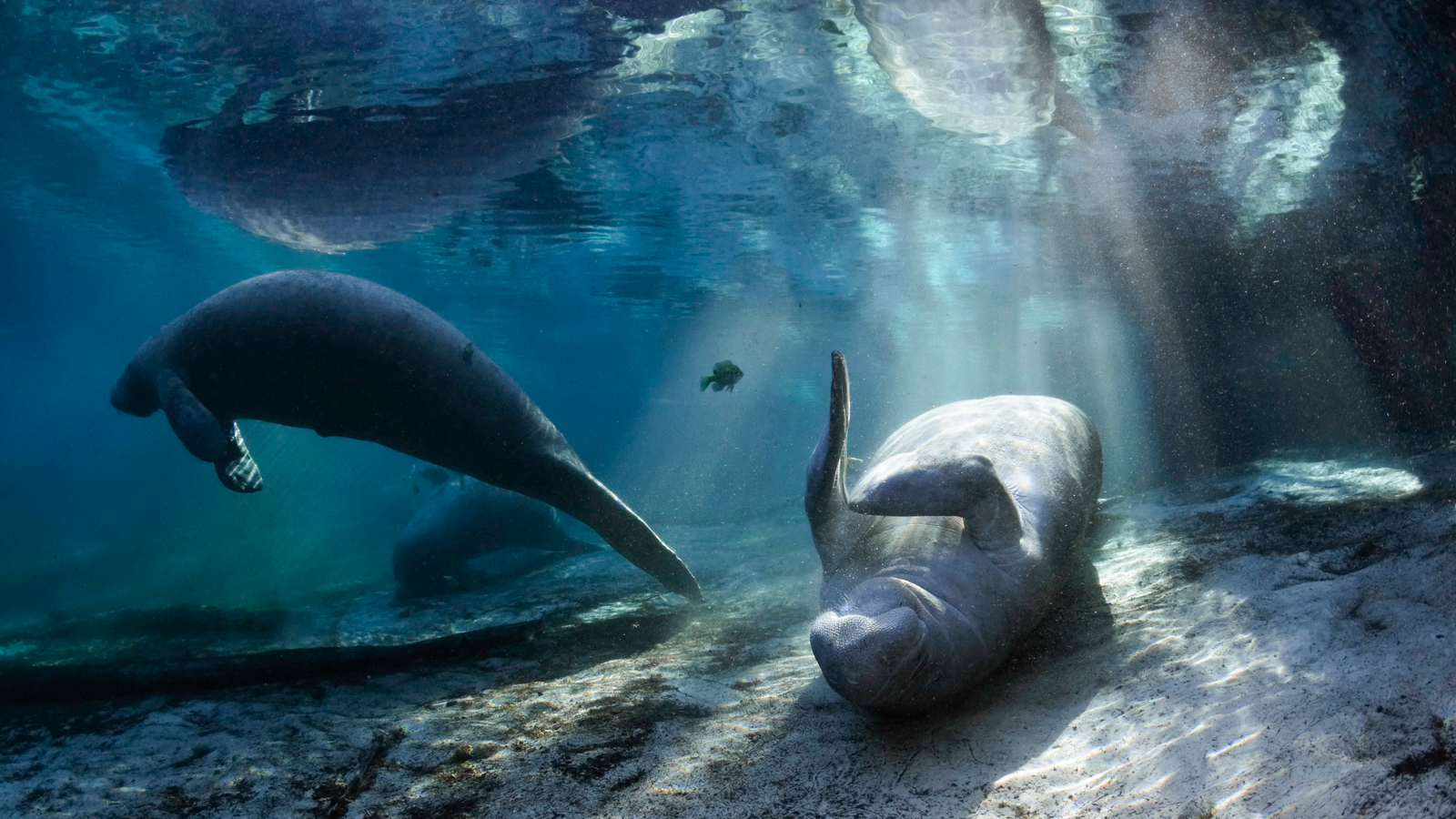
Manatees require warm springs to get through cold spells. Photo © Carol Grant Perhaps hardest hit are animals like manatees that thrive in more tropical environments, but encounter chilly weather in the northern parts of their range. Florida, home to well-known populations of manatees, is also experiencing a cold spell this week.
Manatees require water 68 degrees or warmer. Despite looking rather plump, they have very little fat to protect them in cold water.
When they swim in cold water for long periods, they suffer from what is known as manatee cold stress syndrome – leading to starvation and death.
There are current reports of hundreds of manatees moving into warmer springs that remain a constant temperature. Fortunately, these springs are being closed to public access so the manatees can take refuge there without being further stressed by people.
These winter warm-water areas are vital to the continued survival of manatees in Florida.
-
New England Cottontail
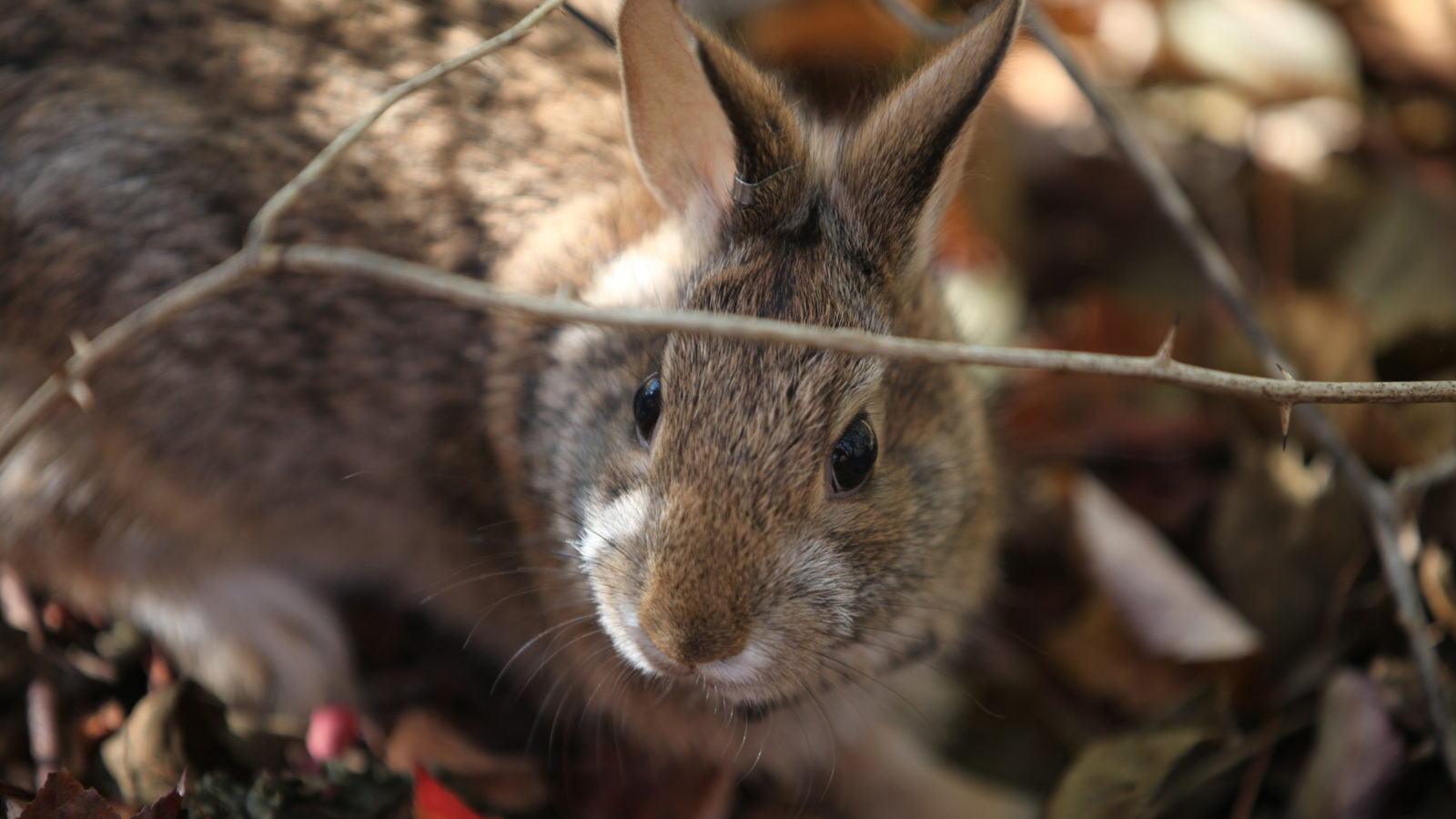
Zoo-bred New England cottontail being released. Photo © Tom Barnes / USFWS The New England cottontail has faced numerous challenges to its survival – lack of young forest habitat, invasive plant species and competition from introduced eastern cottontails (a similar but separate species). And yet conservation efforts, including improved forest management and captive breeding, offer hope.
Will a harsh winter harm these “Yankee cottontails”? It would seem that a rabbit that lives in New England would be well suited to winter. And that’s probably often the case. With excellent habitat and a thriving population, the rabbits would likely do just fine. But a population on the brink without access to food may be wiped out by a heavy and persistent snow.
Researchers in 2015 found a 60 percent reduction in New England cottontail sites in Maine following a harsh winter. Every radio-collared rabbit in New Hampshire perished in that same winter. Plants like blackberry and raspberry bushes become buried with snow, making it harder for the rabbits to feed. The brown rabbits may also stick out more for predators (unlike snowshoe hares which turn white).
-
Non-Native Reptiles
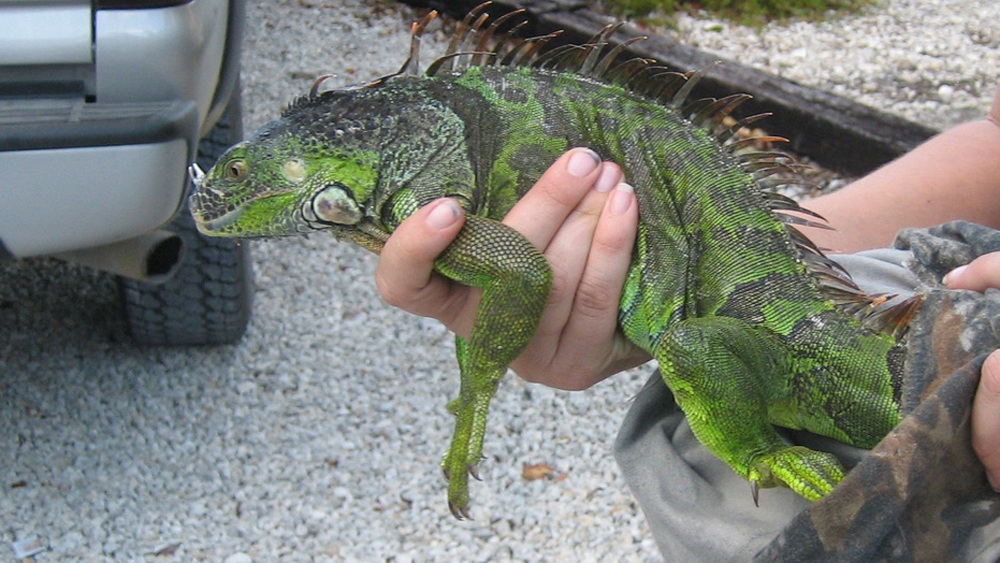
Non-native green iguanas fell from the trees during Florida’s freezing temperatures in 2010. Photo @ The Nature Conservancy In Florida, species like Burmese pythons and green iguanas can become invasive, posing serious threats to native wildlife. When these species are released into a new environment, they find lots of prey but none of their native predators. Their populations can grow rapidly.
Still, they’re not equipped for cold weather. Most conservationists consider this a good thing.
During the so-called “deep freeze” Florida experienced in 2010, there were frequent sensational media stories of iguanas dropping from trees. Most of these iguanas weren’t actually dead; they enter a catatonic state when the temperature drops to 37 degrees Fahrenheit.
There were similar stories of pythons dying by the thousands, although this may have been overstated – there are still plenty of non-native snakes in South Florida.
Zoologist Vladimir Dinets reports in his new book Dragon Songs that non-native spectacled caimans (a crocodilian species) pretty much disappeared from the state following the freeze.
It’s interesting to note that native alligators did just fine. But Dinets reports that dozens of American crocodiles, a native species, died due to the cold in 2010.
-
Forest Pests
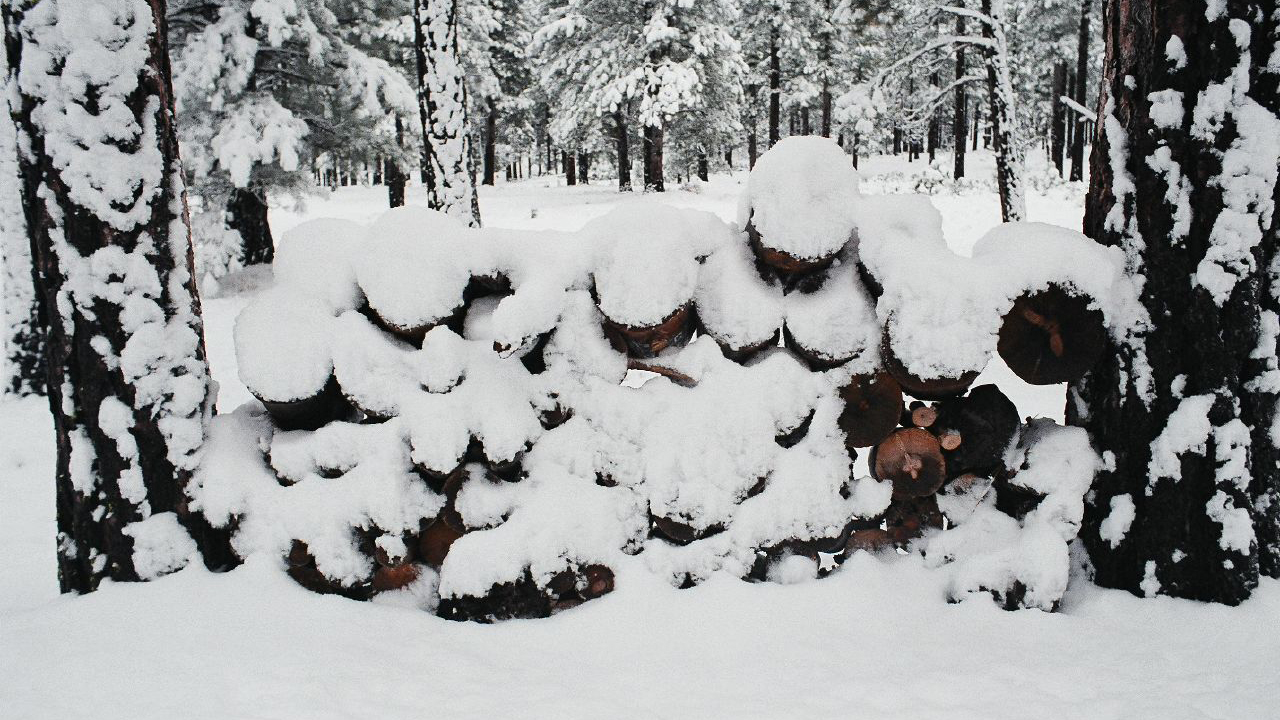
Firewood in snow. Photo © RedTux / Flickr through a CC BY 2.0 license Frigid temperatures might have another positive effect: killing invasive forest pests. These non-native pests can hammer forests but cold weather offers some hope of slowing the spread.
As Minnesota Public Radio reports, the emerald ash borer could suffer through the kill of a high percentage of emerald ash borer larvae. Since it was first confirmed in southern Michigan in 2002, the emerald ash borer has spread rapidly — now infesting more than 100,000 square miles. It devastates ash trees, and there’s no hope of eradication. But at least the cold weather might slow the spread, buying conservationists more time.
The Don’t Move Firewood blog also reports that the hemlock woolly adelgid, an insect devastating to eastern forests, is affected by cold weather. However, the temperature needs to drop below -22 degrees Fahrenheit before this pest begins dying in numbers.
Leigh Greenwood of Don’t Move Firewood notes that even the coldest weather won’t kill all forest pests, it will merely reduce their numbers. So please don’t move firewood to new locations; there may still be (living) invasive species lurking there, and you could spread the pests to new locations.
It will be interesting to learn what effects the “polar vortex” has on native and non-native wildlife. Are you seeing any impacts on wild creatures near your home? Your observations can help scientists learn more about how species fare in this cold weather.
-
Ruffed Grouse
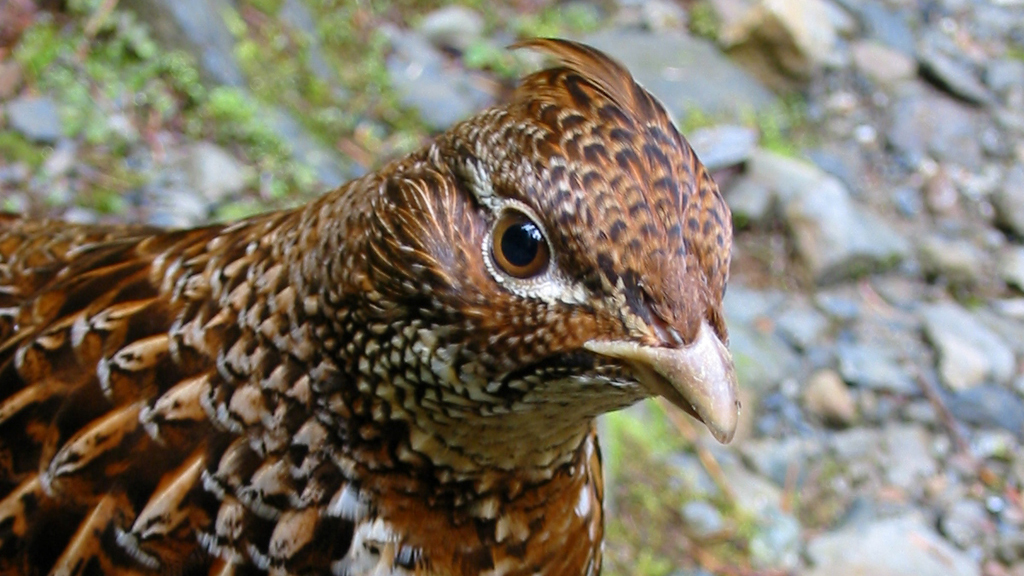
When the snow gets deep, ruffed grouse head under the snow. Photo: Ben Amstutz / Flickr under a Creative Commons license Ruffed grouse thrive in winter and heavy snows and frigid temperatures will be unlikely to affect populations. But a sudden shift in temperatures might trap some grouse…under the snow.
As is the case with skiers, ruffed grouse love powder. When the snow is fluffy, this bird creates one of winter’s most unusual wildlife shelters.
Forget moving out of the snow; ruffed grouse plunge into it.
The ruffed grouse flies along and dive bombs head first into deep, fluffy snow – completely submerging itself. Its body heat then creates a sealed dome under the snow: essentially, its own igloo.
This structure allows the grouse to stay warm even in the most inclement conditions. Research shows that the snow shelter can warm to 32 degrees Fahrenheit, and rarely drops below 20 degrees — even when it’s much colder outside.
The ruffed grouse is found in many forested areas of North America, so it’s the grouse you’re most likely to see on winter wanderings.
In fact, numerous stories exist of grouse “exploding” out of the snow when a skier or snowshoer approaches – surely a dramatic sight, and one I always hope to see on my own winter outings. However, I’ve never seen a firsthand report, so it’s unclear how often this really happens.
Unfortunately, a snow shelter is not without risks for ruffed grouse. Researchers have found instances when a crust forms on the snow, trapping the grouse inside. If the crust lasts too long, the grouse is unable to escape and dies.
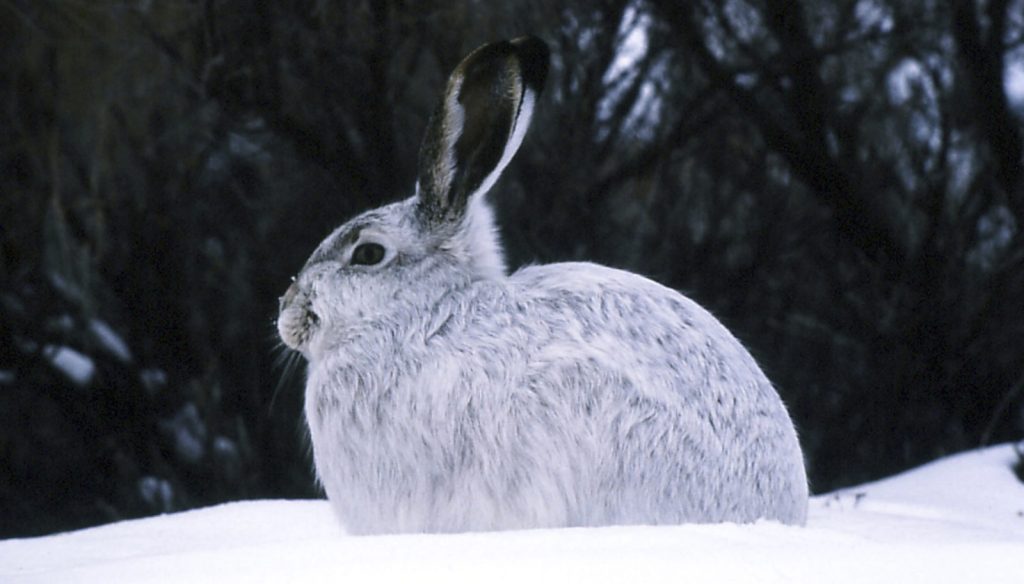



Please explain to me what thousands of MUSKRATS to along a river, such as the Susqluehanna River,. in Pennsylvania, when a VERY SERIOUS FLOOD occurs.
These fur=bearers live in burrows that BEGIN UNDER WATER, but lead to Dens which are ABOVE the water line. . When a River rises say THIRTY (30) Feet above “normal” level, what do these Muskrats DO and WHERE do they GO to escape being DROWNED ???
I used to be a Trapper of Mink and Muskrats and would like to know what happens to the MUSKRATS in the case of a MAJOR FLOOD ??? I,. personally, have NEVER seen signs of “Scurrying” Muskrats during or after a BIG FLOOD !!!
Thanks for any insight.
Bill Getson
Hi Bill,
Many thanks for your question. I have not been able to find a definitive answer to your question. I will keep looking. Muskrats are really interesting animals and I always enjoy encountering them. I also know in some areas, like Pennsylvania, that they are in serious, long-term decline. I think this is a great topic for a future story. Hopefully my research turns up an answer to your question!
Terrific piece! Thanks to M. Miller for writing it and to the Conservancy for making it available to members.
from tree and animal-hugger in CT, Ann Price
I was very moved by Matthew Miller’s cool green science blog and wonder if he has time to meet with a classroom in LA as a Pals Around the World speaker. We are a non profit that is sponsored by children.org and we work with After School All Star middle school classrooms in LA and public schools around the United States donating our Pals books on taking care of the earth and learning about our world. Each Pals book is based on another country and we bring in hundreds of volunteer guest speakers since we launched in 2009 from all walks of life. We started on recycled eco- friendly paper donating trees w American Releaf and Global Forestry for each book we manufactured. Yet since our launch, our consciousness has grown and we only provide pdf versions for school whiteboards and computers to leave a better carbon foot print along with our Pals toolkitnon taking care of the earth. You can see some of these visits in our Pals Ambassador library page at www. Palsaroundtheworld.com Please advise. Thank you
Leslye l Jacobs
Executive Director
310 916-8827
I live in northern Delaware and have seen more raccoons in my backyard this winter. They also frolic on my roof and peer in my bathroom window at dusk. The apple pieces I leave on the roof are always gone in the morning. I think (and hope) that the raccoons have eaten them because the squirrels have already gone to bed by the time I put out the apples. (I know, I know, I shouldn’t feed wildlife, but I have a soft spot for raccoons.)
What about eaglets surviving a cold snap here in Florida?
Hi Maryle, Thank you for the question! The raptor resource blog has good information on how eagles stay warm: https://raptorresource.blogspot.com/2015/02/how-do-eagles-stay-warm.html
I met up with a possum early last spring in my garden, just coming out of the woods and looking at me. I guess he was nosey to see what the noise was. He did not seem to feel intimadated, but I did stand very still. I welcomed him and advised him to go back where he belongs and he turned and left. I named him “Petee the Possum” and I was wondering if there would have been anything I could have done this winter to help him with food, etc. I know that feeding wild animals is not a good idea. I do hear him in the summer when something comes near his “house” and my motion detectors do go on at night and I am hoping it is Petee.
Hi Judy, Thank you for the question! Assuming you’re in the US, it’s best not to feed ‘possums since they’ll lose their fear of people and might then go to close to a neighbor or pet who’s not as friendly to ‘possums. One thing you can do is have “shelter” for them and other creatures in your yard, preferable at a distance from your house – possums can use a variety of spaces as shelter: http://www.dfwwildlife.org/opossum.html
how come you did not add bears???????
Here in southern Vermont, where we border on all sides by protected land, we have not, until this week, had problems with whitetail deer causing browse damage to shrubs around the house in winter. This past week during the snowstorm and subzero temps, the deer came during the middle of the day to strip off all the winterberries and chokeberries from the shrubs we planted for the birds. They also ate frozen persimmon still hanging on the tree branches. A rabbit, holed up under the hot tub for the winter, did a good job of pruning down the spirea bushes next to the house to about 6 inches.
I was fortunate several years ago to experience a grouse exploding from its snow shelter while snowshoeing in the woods close to our house. I was within inches of stepping on it, so it scared the daylights out of me. I had read about this winter behavior, so it was exciting to experience this in person.
Thanks for sharing your observations. I would love to see a ruffed grouse explode out of a snow cave. Every time I write about this, I hear from many readers who have experienced this. Consider yourself very lucky! I hope to have the same encounter some day.
Florida manatees also head to power plants where warm water is discharged. In winter these are great tourist gatherings complete with tee shirts toy manatees etc.
I remember hearing Bob Whites all the time in SC in the late 70s and early 80s. Hopefully new laws to protect wildlife and habitat will resurface no matter who thinks they re running our Democracy
Thank you. Answered many questions during the current weather we are having. I have wondered about the birds that migrated only to be met with colder temps than they left…
Just want to say love reading the info.!
Thank you for this tarticle. Ive been worried about tbe wildlife! What about deer in the South?
So, would you say that this is also and example of natural selection for each animal example you’re given in the article (native and introduced)?
In part, yes. In a couple of instances (northern bobwhite and New England cottontail), I would say it is more a case of species being vulnerable due to having small populations. If those species were abundant, they would be able to bounce back from blizzards and other “threats.” But when their populations are small or isolated, it’s much more difficult for populations to rebound.
A comparison might be to a person who has something happen, like a burn. If you receive a minor burn on your arm, it is painful, but if you are strong and healthy, it is not life threatening. But if your immune system is compromised, then even a light burn could be devastating.
A wildlife population that is strong and healthy is able to deal with freak weather, blizzards, fires, predators, etc. These are all a normal part of many ecosystems. But if the population is small, isolated and vulnerable, something like a blizzard can be devastating.
Nine-banded armadillo range expansion. Armadillo die in large numbers when colder weather sets in. Let’s hope the nine banded armadillo don’t die off too much. I like them.